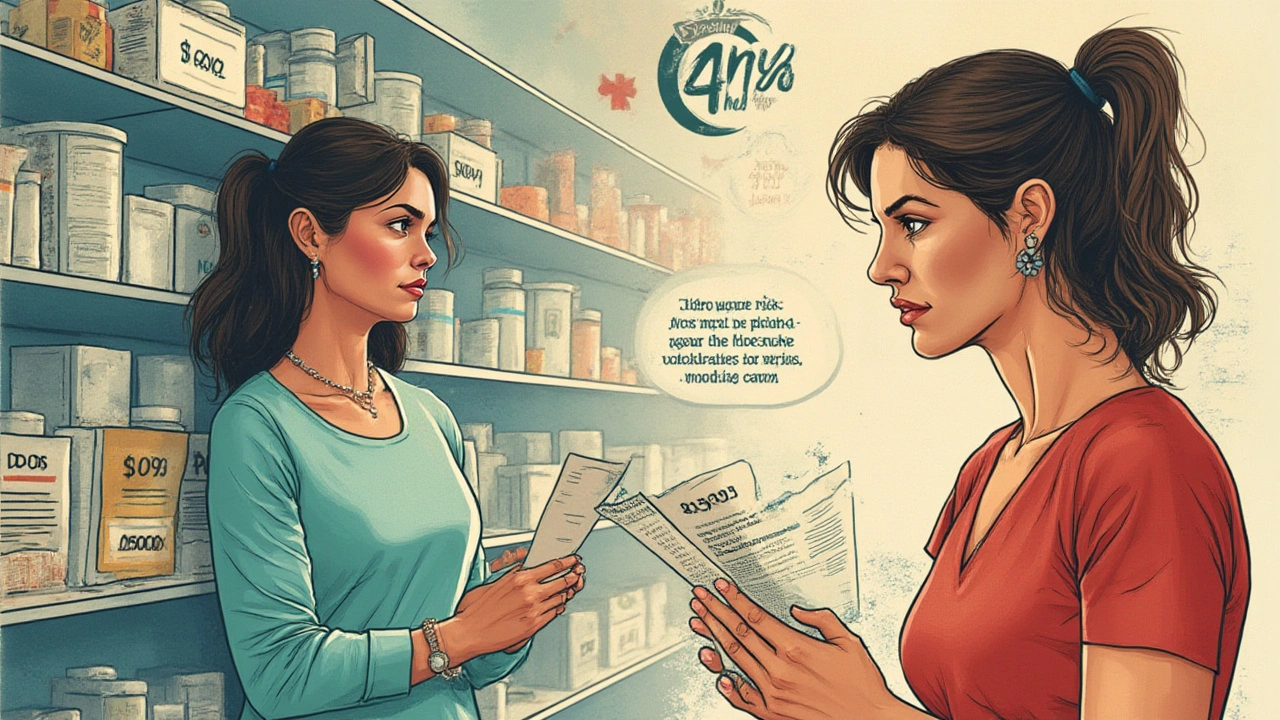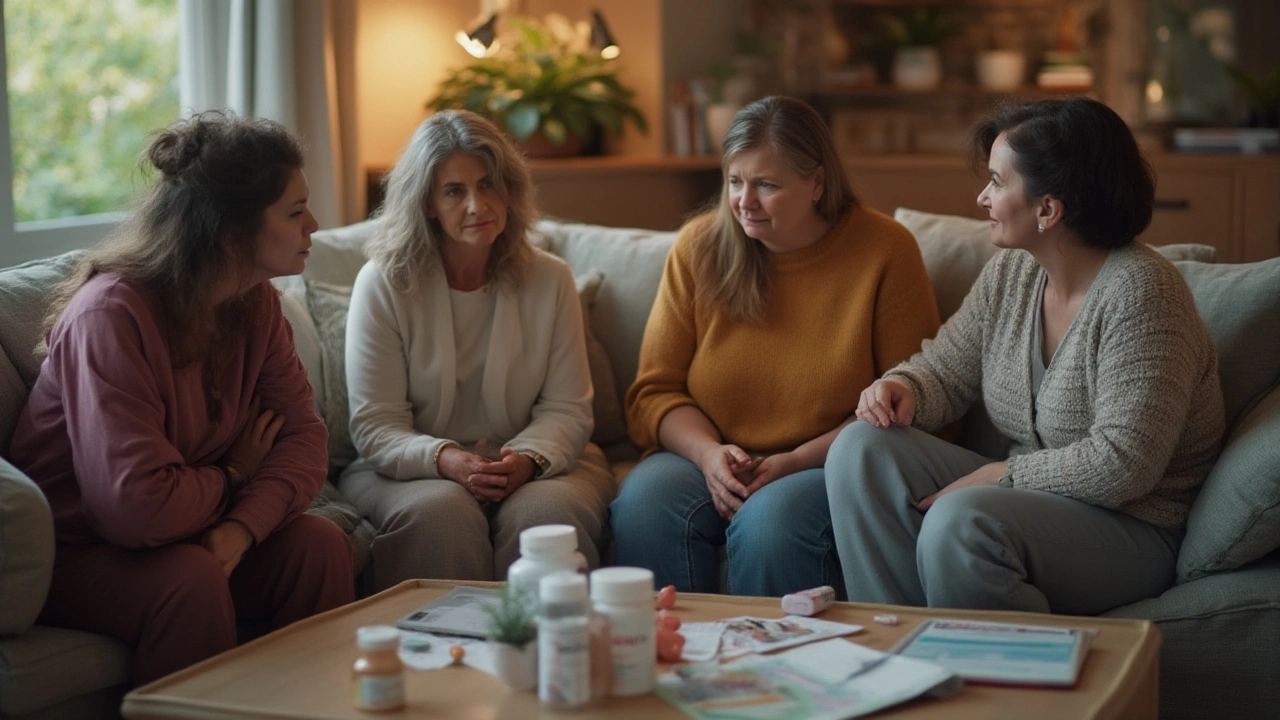Hot flashes wreck sleep. Night sweats mess up moods. Joints ache out of nowhere. Menopause comes for everyone born with ovaries, usually sometime after 45, and it’s a wild ride every time. So how did we get to the point where treating menopause became a multibillion-dollar pharmaceutical industry? Is hormone therapy the magic fix, or is there more to the story? Buckle up—because the fight over menopause meds is bigger, messier, and far more interesting than most people realize.
Why Menopause Became a Pharmaceutical Battle
If you were born before the 1960s, menopause was hush-hush and not even doctors talked much about it. But as soon as Big Pharma realized half the population was struggling with sleepless nights, mood swings, and bone loss, the race was on. Drug companies promoted estrogen therapy with promises of youth, energy, beauty, happiness—you name it. By the late 1990s, millions of women worldwide started hormone replacement therapy (HRT). One American study showed HRT prescriptions peaked in 1999 at almost 90 million per year. Some doctors genuinely believed estrogen wasn’t just for menopause, but for long-term health, even suggesting lifelong prescriptions.
Things got complicated fast. In 2002, the huge Women’s Health Initiative trial dropped a bomb—people on HRT had a higher risk of heart attacks, strokes, and breast cancer compared to those on placebo. That same year, HRT use in the U.S. plummeted by nearly half. Still, pharmaceuticals never left the scene. After researchers tweaked the formulas, hormone therapy got a makeover: now the messaging focused on the lowest effective dose for the shortest period, and new non-hormonal options entered the pipeline. Medications keep rolling out. The battle over which treatment is safest, most effective, and who should take it is far from settled.
Here’s what’s wild: Only about a quarter of women get professional advice about menopause symptoms before their periods stop for good, and fewer than 10% in some countries ever receive prescription treatment. The rest improvise, often spending a fortune on supplements and over-the-counter “miracles” that lack serious research. For women who want pharmaceutical help, the options—good and bad—are vast.
Decoding Hormone Therapy and How It Really Works
Hormone therapy is still the gold standard for tackling classic menopause symptoms like hot flashes, night sweats, vaginal dryness, sleep troubles, and even brain fog. The science here is simple: when your ovaries stop making estrogen and progesterone, your brain freaks out. Hormone therapy puts these back, aiming to restore balance. It’s usually given as pills, patches, gels, sprays, or vaginal rings. Here’s a quick summary table doctors often use:
| Type | Main Ingredients | Form | Main Uses | Risks |
|---|---|---|---|---|
| Systemic Estrogen | Estradiol, Conjugated Estrogens | Pills, patches, injections | Hot flashes, night sweats, bone loss | Blood clots, stroke, breast cancer* |
| Estrogen + Progestin | Plus Progestin (for uterus protection) | Pills, patches | Women with uterus (to avoid cancer) | Risks as above plus heart disease* |
| Local Estrogen | Estriol, Estradiol | Creams, rings, tablets (vaginal) | Vaginal dryness, urinary symptoms | Low systemic risk |
*Risks vary with age, dose, and personal history
Here’s a fact that surprises most: modern studies show hormone therapy can be safe if started before age 60 or within 10 years of menopause beginning. Risks spike only in older folks or long-term use—so it’s no longer a “no-go” for nearly everyone. In fact, the North American Menopause Society (as of 2023) says it’s usually worth considering for healthy women soon after menopause. Still, there’s no one-size-fits-all. High blood pressure? Family history of cancer? Hormones might not be for you. Everyone’s risks and needs look different.
Hormone therapy doesn’t get all the credit, though. Medications like SSRIs (usually for depression) or gabapentin (seizures/nerve pain) can quietly zap hot flashes too—and are sometimes a safer bet for people who can’t do hormones. There’s also ospemifene for vaginal dryness, which acts like estrogen in some tissues but isn’t a hormone. These aren’t miracle cures, but for many, they tip the scales from miserable to manageable.

Choosing the Right Medication: Costs, Access, and the Industry’s Hidden Side
The cost of managing menopause isn’t just the price at the pharmacy. Add in time off work, multiple doctor appointments, and endless searching for remedies, and it adds up. In the U.S., a year of branded hormone therapy pills can run over $1200 without insurance. Patches, new bioidentical formulas, or compounded creams sometimes cost double. Insurance covers some brands and not others. In most of Europe and Canada, basic estrogen is often underwritten by public health—so out-of-pocket might be less than $10/month. But it’s a lottery: which brand, which dose, and which delivery method gets covered. If you want “bioidentical” hormones from a private compounding pharmacy? That’s an extra bill entirely, with prices and quality ranging wildly.
Here’s what people don’t talk about: even as prescription rates fell after 2002, the menopause pharmaceutical market grew—because the industry pivoted to “natural” products, sometimes with less regulation. Today, supplements claiming to relieve menopause rake in nearly $30 billion each year, roughly five times more than prescription HRT. Many contain black cohosh, red clover, or soy. Problem? Nearly all large clinical trials say most plant-based pills work no better than sugar pills for hot flashes or mood swings.
- Many people don’t realize: Only FDA-approved hormone therapies carry rigorous batch testing for dose and purity. Supplements may contain inconsistent ingredients, or even contaminants.
- Initial consults for prescription treatment often run over $150 in places without universal healthcare. Add lab work, follow-ups, and refills, and spending hundreds to manage symptoms is the norm, not the exception.
- Only 10-15% of women prescribed hormone therapy stick with it long-term—side effects, fear of risk, and cost all play roles. Many give up before finding the right dose or delivery method.
Money aside, access is about education. Studies from the UK, Australia, and the U.S. show most doctors spend less than an hour learning about menopause in medical school. That’s changing, slowly, as advocacy groups push for more mandatory menopause training. In the meantime, pharmacy and supplement industries often fill the information gap—with ads, not always facts.
Practical Tips: Making Smart Choices About Menopause Medication
So, you’re navigating menopause—or helping someone who is. Feeling confused about what meds to start, switch, or ditch? Here’s what actually helps:
- Before you walk into a doctor’s office, track your symptoms for at least two months. Write down hot flashes, sleep issues, mood, and pain. This specific info helps guide medication choices.
- If you’re under 60 and healthy, and the worst symptoms are night sweats or hot flashes, talk to a clinician about a low-dose, short-term hormone therapy course. Many find relief within weeks.
- If you have a family history of breast, uterine, or ovarian cancer—or have had blood clots—ask about non-hormonal prescription options. Paroxetine (a low-dose antidepressant), venlafaxine, or gabapentin all have evidence for treating hot flashes.
- Be wary of “natural” remedies or compounded bioidentical hormones sold outside major pharmacies. Not all are regulated, and quality is hit-or-miss.
- Never start new supplements or medications without running them by your pharmacist. Even herbal products can interact with prescription drugs or make hormone therapy less effective.
- Bones get weak fast after menopause—ask your doctor about a scan (DEXA). Some only need vitamins and walking; others might need bone-strengthening prescriptions. Don’t guess; check.
Here’s one more nugget: hot flashes usually fade on their own in about 4-7 years for most women. That said, severe symptoms can mess with life and work, and effective meds can buy precious sleep and sanity. It’s about quality of life, not just survival.

The Future: What’s Next for Menopause Pharmaceuticals?
Pharma isn’t done with menopause. New classes of drugs are arriving—some promising big changes. For example, fezolinetant, approved in the U.S. in 2023, targets brain receptors for hot flashes instead of hormones. Early reports suggest fewer side effects, and it’s a daily tablet. Trials in adults ages 40 and up show a rapid drop in hot flash frequency—by over 70% in some studies. It’s pricey, though, and insurance coverage is still catching up. More options are in phase 3 trials, like selective estrogen receptor modulators that target specific tissues, minus risks for breast or uterine cancer.
The most exciting part: patient demand means research is finally moving just as fast as the market. Look for wearable devices that can predict and warn of hot flashes (so you can dress or adjust the thermostat), and even AI-powered apps for symptom tracking and medication reminders. Drugmakers are pouring money into molecules that mimic estrogen’s benefits with fewer side effects.
But none of these advances matter if access remains unequal. In 2025, urban clinics with menopause specialists still outperform rural areas by miles, and costs are a real barrier for many. Education, transparency, and honest talk about risks and benefits—that’s where real change starts. If you or someone you love is weighing menopause meds, don’t settle for guesswork. Ask hard questions, demand real answers, and never forget that *menopause medication* is about quality of life—not just surviving the symptoms.


